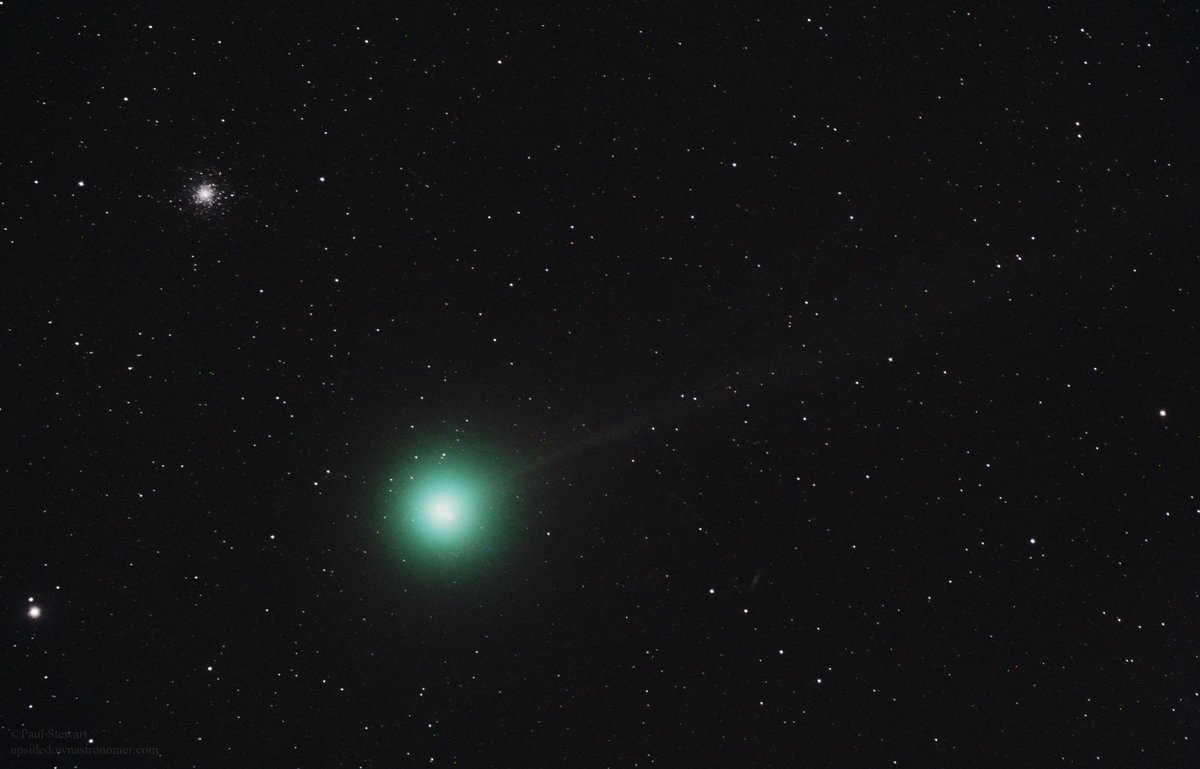Brightly burning Lovejoy comet to be visible with naked eyeYahoo News
By Michael Walsh 9 hours ago
 Comet Lovejoy (2014 Q2) was spotted from Australia on Dec. 13, 2014.
Comet Lovejoy (2014 Q2) was spotted from Australia on Dec. 13, 2014.You won’t need fancy equipment to watch a dazzling space rock soar across the night sky early next month.
The Lovejoy comet, known to the scientific community as C/2014 Q2, is visible with the aid of binoculars throughout much of January. And it will be at its brightest on Jan. 7, 2015.
People in the countryside — far from the light population of major cities — will get to scope out the comet with nothing but their eyes.
Terry Lovejoy, an Australian amateur astronomer, discovered the comet on Aug. 17, 2014, from his rooftop observatory in Brisbane, Queensland. It is his fifth comet discovery.
"To me, all comets are interesting because they are unpredictable. Comet C/2014 Q2 has brightened considerably, and might continue to brighten as it approaches perihelion (January 30)," meteorite specialist Dr. Denton Ebel said to Yahoo News in an interview.
Astronomers gauge the brightness of a star using a magnitude scale on which the brightest have lower numbers.

 Epic Cosmos @EpicCosmos Follow
Epic Cosmos @EpicCosmos Follow
Outstanding images of brightening Comet #Lovejoy Q2. This one by Gerald Rhemann SW #Africa. http://www.astrostudio.at/2_Bright%20Comets.php?PHPSESSID=e88bbfdbf271fb5ca26ca90ffc2e77eb …
12:13 AM - 30 Dec 2014
47 Retweets 57 favorites Reply Retweet
At the time of its first sighting, the comet was burning at an apparent magnitude of 15, but that number continued to drop, and the comet is expected to reach its brightest point next month.
Joe Rao, a guest lecturer at New York's Hayden Planetarium, thinks it could reach magnitude 4.6 around Jan. 7, when it’s closest to Earth.
This, he explained on Space.com, would make it the brightest comet in the night sky since Comet Holmes in October 2007.
Rao said that Lovejoy will be slightly brighter than Eta Ursae Minoris, which is the faintest of the four stars that form the Little Dipper’s bowl. So, if you can see that, you will be able to see the comet.

 Paul Stewart @astrostew Follow
Paul Stewart @astrostew Follow
A quick stack of C/2014Q2 and M79
Still collecting data and calibration frames
#C2014Q2
8:08 AM - 29 Dec 2014
15 Retweets 12 favorites Reply Retweet
David Williams, former director of the St. Cloud State University Planetarium, said Lovejoy will travel through the constellations of Lepus and Orion and into the constellation of Taurus.
“It will be approximately 44,000,000 miles or about one half astronomical unit (an A.U. is the distance from Earth to the sun),” he wrote in the St. Cloud Times. “Toward the end of January, this comet will brighten a little bit as it continues to approach the sun.”
NASA astronomer Mitzi Adams says that comets are exciting in part because of how quickly they move.
"Comets are fun to watch because they move a large distance in the sky from one day to the next. If an observer looks for a comet on two consecutive days at the exact same time, a comet will have moved quite a bit in the sky," she told Yahoo News. "Indeed, one can observe cometary motion, if patient, on the same night."
The comet has an orbital period of roughly 11,500 years, so if you miss it this time around you won’t get another chance.
"The comet is a long period comet," Adams said, "it may pass by Earth again in about 8000 years."
Ebel says the comet will be below Orion's left foot (the bright star Rigel) in the evening of Jan. 7 and will climb higher in the sky as the month progresses.
"Each comet apparition gives us the chance to learn more about our solar system," he said, "particularly the question of the origin of water in the inner solar system."
http://news.yahoo.com/approaching-lovejoy-comet-to-reach-brightest-point-soon-183404342.html
![]() 6 new categories and 72 new items added to the shop!
6 new categories and 72 new items added to the shop!![]() 6 new categories and 72 new items added to the shop!
6 new categories and 72 new items added to the shop!